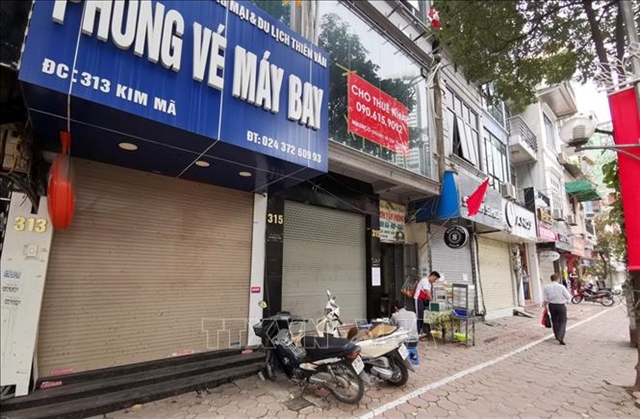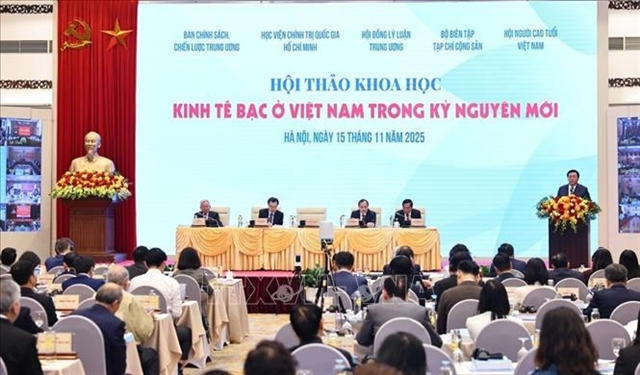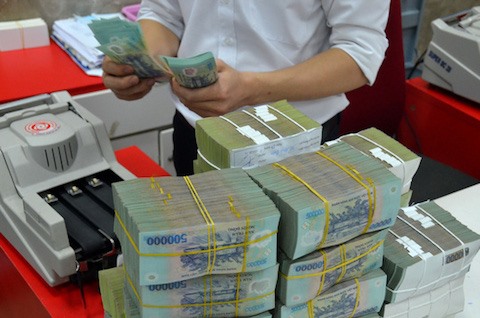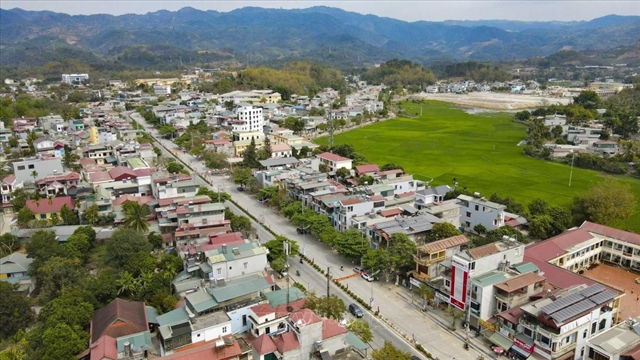 Business Beat
Business Beat

Since Vietnam Asset Management Company (VAMC) seized Sài Gòn One Tower using the authority conferred on it by Resolution 42 on settling bad debts, several banks have followed suit and offered mortgaged assets for sale to help pay their bad debts.
 |
Thiên Lý
Since Vietnam Asset Management Company (VAMC) seized Sài Gòn One Tower using the authority conferred on it by Resolution 42 on settling bad debts, several banks have followed suit and offered mortgaged assets for sale to help pay their bad debts.
Resolution 42 gives creditors the right to seize properties mortgaged against non-performing loans if debtors do not co-operate.
Sài Gòn One Tower was mortgaged against a bad debt of VNĐ7 trillion (US$308.4 million) that Maritime Bank and Đông Á Bank sold to the VAMC in April 2015.
The VAMC said in recent months it had organised a raft of auctions of assets it had bought mainly from banks, and most went through successfully.
A Sacombank spokesperson said the lender successfully sold off industrial clusters in Long An Province for VNĐ9.2 trillion ($405.3 million) and got back a further dozens of trillions of đồng through the VAMC.
It is now offering more bad debts for sale in an attempt to reduce the ratio from 6.68 per cent in early 2017 to 3 per cent by the end of this year.
Small lenders have also organised auctions to sell assets.
The National Citizen Joint Stock Commercial Bank said it sold 14 Kia Morning cars and a 2.5-hectare land plot mortgaged by its debtors.
It had earlier seized eight assets that had been mortgaged in Đồng Tháp and Long An provinces.
VAMC director Đoàn Văn Thắng said since late last year, many banks had achieved good results in resolving bad debts, collecting trillions of đồng by selling assets.
He said Agribank had collected VNĐ8 trillion ($352.4 million) and Sacombank, nearly VNĐ5 trillion.
In 2017, the total value of bad debts resolved by the banks in co-operation with the VAMC was VNĐ30.7 trillion, much higher than the target set by the State Bank of Việt Nam.
This year, many banks have already outlined plans to take back bad debts they have sold to the VAMC to resolve them on their own.
Analysts said banks have become active in tackling their bad debts because the VAMC has decided to buy them at market prices.
The VAMC decided to do so last year, shelling out more than VNĐ3 trillion to buy debts. Most of them are expected to be settled soon.
It has a target of buying VNĐ6.6 trillion worth of debts this year, and co-operating with banks to settle bad debts of at least VNĐ140 trillion by seizing and selling assets.
But analysts said all these represent a drop in the ocean, and banks continue to resolve their bad debts mainly by writing them off.
BIDV for instance had an operating profit of VNĐ24 trillion last year, but its pre-tax profit was only VNĐ8.8 trillion after making risk provisions worth VNĐ15 trillion.
VPBank may have recovered VNĐ3 trillion worth of bad debts in 2017, but it still had to set aside more than VNĐ8 trillion in provisions, or 30 per cent of its net operating profit.
The situation merely underlines the need to soon have a real debt buying and selling market in the country.
Experts said such a market would help the VAMC and banks to efficiently recover their bad debts.
The two important conditions for the market to take shape are reasonable price levels and transparency when dealing with bad debts that can be traded, they said.
Many foreign investors were once keen on buying bad debts from banks, but had to drop the idea because the banks wanted too much, but did not have detailed and transparent information about their debts.
To resolve these problems, analysts suggested having independent companies to assess the prices of bad debts.
Securitisation of bad debts, particularly those owed by companies, is another measure that could help Việt Nam soon develolp a real debt buying and selling market, they said.
Tough decree stalls car imports
In mid-January, Japanese auto giants Toyota Motor and Honda Motor decided to suspend exports to Việt Nam after a new rule took effect requiring stringent checks of imported vehicles.
The rule came into effect just as Việt Nam finally eliminated tariffs on automobiles imported from members of the Association of Southeast Asian Nations.
Decree 116/2017 on the production, assembly, import and warranty of automobiles requires all models of imported vehicles to obtain a Vehicle Type Approval certificate from authorities of exporting countries.
It also requires emission and safety tests to be done on every batch of automobiles imported. In the past, only the first shipment of each model would be tested.
Many giant car manufacturers from Japan and the US have expressed concern, saying it would be difficult to continue exporting cars to Việt Nam.
They said the required papers were not issued by exporting countries, making it impossible for them to meet the requirement.
Besides, they added, no guidelines had been issued to help car makers prepare the necessary paperwork.
A spokesperson for an automaker also said the requirements in the decree would cause a huge waste of time and money for importers since one emission test could take two months and cost up to $10,000.
Some experts viewed the new decree as a measure to protect the domestic auto industry.
The Việt Nam Automobile Manufacturers’Association (VAMA) has 17 members, most of whom are joint ventures involving foreign giants like Toyota, Honda, GM, and Ford, who have been in Việt Nam for years.
They used to import parts and assemble vehicles in Việt Nam, but in recent years have almost stopped doing so and switched instead to importing completely-built units.
Many analysts have backed the new decree, saying that the long rope given to auto companies to coax them into investing and developing production has not worked, and the new policy could convince them to expand production and increase the use of local parts.
This could prevent the possibility of Việt Nam turning into a dumping ground for used equipment and technology, protect consumers’ interest and give a boost to the Vietnamese auto industry.
Consumers had hoped to buy cars at lower prices following the tariff removal, but imports have stalled after the auto giants stopped exporting to the country.
Customs statistics show that only 60 cars, including six sedans, were imported into Việt Nam in the first half of this month.
Older models have regained popularity and their prices have spiked as a result.
Many people have had to be content with buying domestically made vehicles. — VNS




